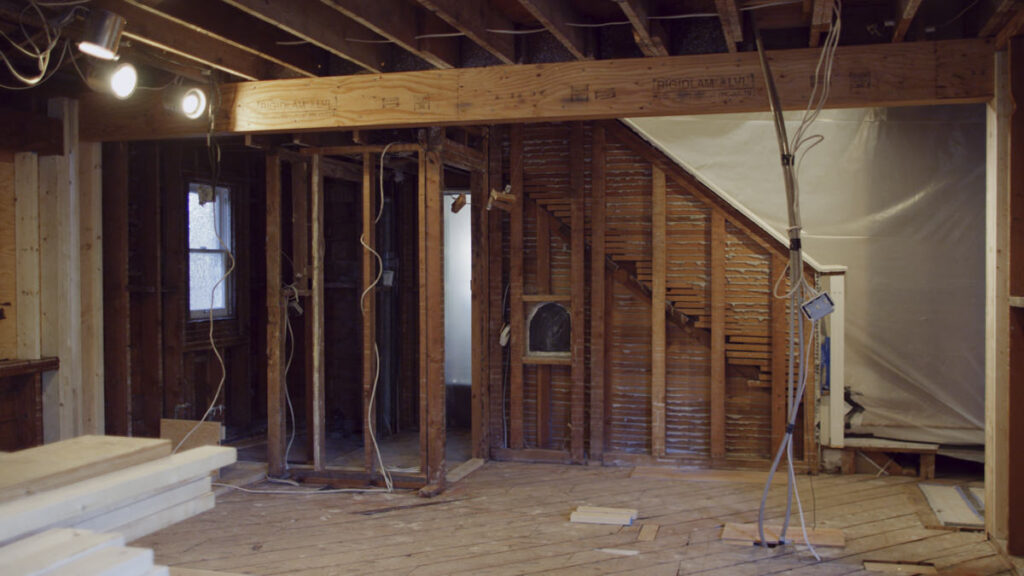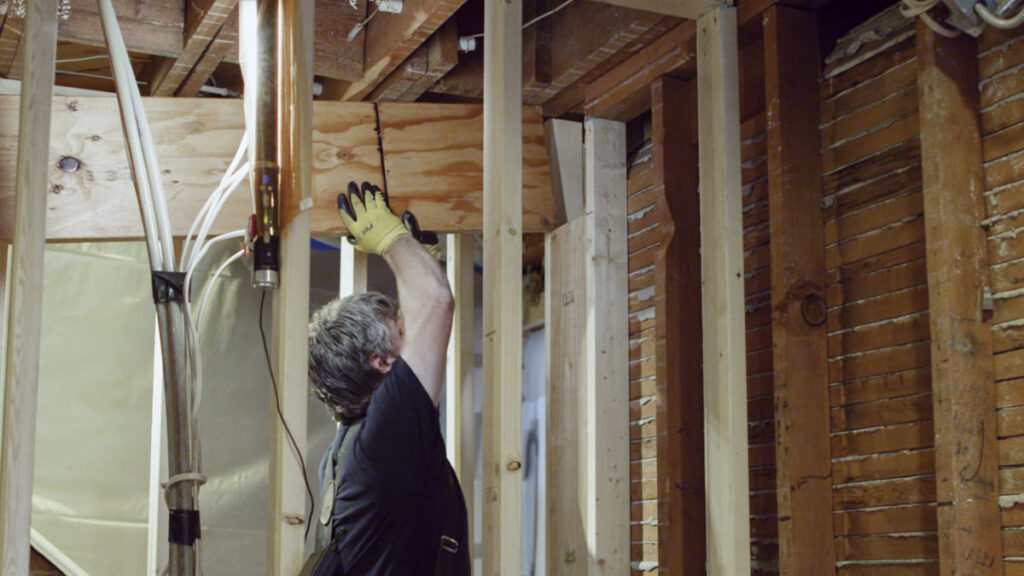LVL (Laminated Veneer Lumber) beams are a popular choice for structural support in construction projects. Their strength, versatility, and cost-effectiveness make them an ideal solution for a wide range of applications. However, installing LVL beams requires careful planning and execution to ensure a safe and successful outcome. In this article, we will explore the best practices and tips for LVL beam installation.
Understanding LVL Beams
Before diving into the installation process, it’s important to have a solid understanding of what LVL beams are and their benefits. LVL beams, also known as laminated veneer lumber beams, are engineered wood products made by bonding multiple layers of thin wood veneers together with adhesive. This construction method results in a beam that is stronger, stiffer, and more dimensionally stable than traditional solid wood beams.
What are LVL Beams?
LVL beams consist of several layers of wood veneers arranged parallel to the beam’s length. These veneers are carefully selected and bonded together with moisture-resistant adhesive, creating a solid and strong beam that can support heavy loads. The layers are typically oriented in a way that maximizes their strength and minimizes any potential weaknesses.
Each layer of veneer is carefully inspected and graded for its strength and quality, ensuring that only the best pieces are used in the construction of LVL beams. This meticulous selection process guarantees that the resulting beams are of high quality and meet the required standards for structural integrity.

Benefits of Using LVL Beams
There are several advantages to using LVL beams in construction projects. Firstly, LVL beams have a high strength-to-weight ratio, making them capable of supporting heavy loads while being relatively lightweight. This can reduce the overall weight of the structure and simplify the installation process. It also allows for longer spans between supports, providing more design flexibility.
Secondly, LVL beams are more dimensionally stable than solid wood beams. They are less prone to warping, twisting, or splitting, which ensures the long-term structural integrity of the building. This stability is particularly important in areas with fluctuating humidity levels or high moisture content, as it helps to minimize any potential damage caused by these environmental factors.
Lastly, LVL beams are highly versatile and can be easily shaped, cut, and drilled on-site. This makes them suitable for a variety of architectural designs and construction projects, allowing for greater flexibility in design and installation. Whether it’s creating curved beams or incorporating complex joinery, LVL beams can be customized to meet the specific requirements of the project.
In conclusion, LVL beams are a reliable and efficient choice for structural applications. Their strength, dimensional stability, and versatility make them an ideal option for a wide range of construction projects. By understanding the benefits and characteristics of LVL beams, you can confidently incorporate them into your next building project.
Pre-Installation Considerations
Before starting the LVL beam installation, there are several factors to consider to ensure a successful outcome. These include selecting the right LVL beam for the job and gathering the necessary tools and equipment.
Proper planning and preparation are key elements in the successful installation of LVL beams. It is important to assess the structural requirements of the building and understand the specific load-bearing needs of the project. Taking the time to carefully evaluate these factors will help in choosing the most suitable LVL beam for optimal performance and safety.
Choosing the Right LVL Beam
The selection of the appropriate LVL beam is crucial for the structural integrity of the building. Factors such as the load requirements, span length, and deflection limits should be taken into consideration. Consulting a structural engineer or design professional can help determine the right size and type of LVL beam for the specific project.
Additionally, it is important to consider the environmental conditions that the LVL beam will be exposed to, such as moisture levels and temperature fluctuations. Choosing an LVL beam that is specifically designed to withstand these conditions will ensure long-term durability and performance.
Necessary Tools for Installation
Having the right tools and equipment on hand is essential for a smooth installation process. Some of the commonly required tools include a circular saw, measuring tape, drill, leveling device, safety equipment (such as gloves and protective eyewear), and fastening devices (such as nails or screws). Ensure that all tools are in good working condition and follow the manufacturer’s instructions for proper use.
In addition to the basic tools, having a support system in place during installation can help ensure accuracy and efficiency. This may include temporary bracing, lifting equipment, and assistance from trained professionals to handle the LVL beams safely and securely.
Read about cost at: The Cost-Effectiveness of Using Timber LVL Formwork
Step-by-Step Guide to LVL Beam Installation
Now that you have selected the right LVL beam and gathered the necessary tools, let’s dive into the step-by-step guide for LVL beam installation.
Preparing the Installation Site
The first step in installing an LVL beam is to prepare the installation site. This involves removing any obstacles, debris, or old structural elements that might hinder the installation process. Clear the area and ensure that the supporting walls or columns are structurally sound and capable of carrying the load.
Before you begin, take a moment to appreciate the significance of this step. By clearing away any potential obstructions, you are creating a clean canvas upon which the strength and beauty of the LVL beam will be showcased. It’s like preparing a stage for a grand performance, where the LVL beam will take center stage as the star of the show.
Next, carefully measure and mark the locations where the LVL beam will be installed. Double-check the measurements to ensure accuracy, as even small errors can have significant consequences in the overall structural integrity. Take your time with this step, for it is the foundation upon which the entire installation process rests. Read more about accuracy on https://www.ncsu.edu/labwrite/Experimental%20Design/accuracyprecision.htm
If necessary, consult a professional engineer or building inspector to review the site and provide guidance on the installation process. Their expertise and knowledge can offer valuable insights and ensure that the installation is carried out with the utmost precision and safety.
Installing the LVL Beam
With the site prepared, it’s time to install the LVL beam. Begin by positioning the beam in the marked locations, ensuring that it is level and properly aligned. Depending on the length and weight of the beam, it may require multiple people to lift and maneuver it into place safely.
As you lift the LVL beam, take a moment to appreciate its strength and durability. This engineered wood product, made from layers of lumber bonded together with adhesives, is designed to withstand immense loads and provide reliable support. It is a testament to human ingenuity and innovation, combining the natural beauty of wood with the strength of modern engineering.
Once the beam is positioned, secure it in place using appropriate fasteners such as nails or screws. The specific fastening method will depend on the design and construction requirements, so consult the manufacturer’s guidelines or seek professional advice for the best approach.
During the fastening process, it’s important to maintain the alignment and levelness of the beam. Use a leveling device to ensure that the beam is straight and plumb. Any deviations from proper alignment can compromise the structural integrity of the building. Take your time with this step, for it is the meticulous attention to detail that ensures a solid and reliable installation.
Post-Installation Checks
After the LVL beam is securely fastened, perform a thorough inspection of the installation. Check for any signs of damage or cracking and ensure that the beam is properly supported and load-bearing. If you notice any issues, consult a professional to address them promptly.
Stand back and admire your work, knowing that you have contributed to the strength and stability of the structure. The LVL beam, now an integral part of the building, will silently bear the weight and provide support for years to come. It is a testament to the craftsmanship and dedication that went into its installation.
Additionally, it’s important to monitor the LVL beam over time for any signs of structural weakness, such as excessive deflection or unusual noises. Regular inspections and maintenance can help identify and address potential problems before they escalate. By taking a proactive approach to maintenance, you are ensuring the longevity and safety of the structure.
Best Practices for LVL Beam Installation
Safety Measures to Consider
When working with LVL beams, it’s crucial to prioritize safety. Ensure that all workers involved in the installation process receive proper training and adhere to safety guidelines. Use appropriate personal protective equipment (PPE) to minimize the risk of injuries.
Additionally, be aware of the structural load limitations of LVL beams and avoid overloading them. Consult a professional engineer to determine the maximum load capacity for the specific LVL beams being used.
Ensuring Proper Alignment
Proper alignment during LVL beam installation is vital for the long-term performance of the structure. Take the time to carefully measure and align the beams, ensuring that they are level and plumb. Even slight misalignments can lead to structural issues down the line.
Use a laser or water level to achieve precise alignment, and make any necessary adjustments before securing the beams in place. Double-check the alignment after fastening and make corrections if needed.
Maintenance Tips for LVL Beams
LVL beams require regular maintenance to ensure their durability and performance. Keep the beams clean and free from dirt, debris, or excessive moisture. Avoid direct contact with standing water, as prolonged exposure can lead to swelling or damage. Click here to find more about moisture.
Inspect the beams periodically for signs of damage, such as cracking, splitting, or delamination. Promptly address any issues to prevent further deterioration. Applying an appropriate sealant or protective coating can help extend the lifespan of the beams.
Troubleshooting Common LVL Beam Installation Issues
Dealing with Misalignment
If you encounter misalignment issues during the LVL beam installation process, take immediate action to rectify the situation. Consult a professional engineer or construction expert for guidance on how to correct the misalignment without compromising the structural integrity.
Some possible solutions may include adding shims or adjusting the fasteners to realign the beams properly. However, it’s essential to seek professional advice to ensure that the corrective measures are appropriate for the specific situation.
Addressing Structural Weaknesses
In some cases, LVL beams may exhibit signs of structural weakness after installation. This can manifest as excessive deflection, creaking noises, or visible cracks. If you observe any of these issues, consult a structural engineer to evaluate the building’s load-bearing capacity and identify the cause of the weakness.
Based on the engineer’s assessment, appropriate remedial actions, such as reinforcing the beams or redistributing the loads, may be required. Implementing the recommended solutions promptly can prevent further damage and ensure the safety of the structure.

Remedying Installation Errors
In the event of installation errors or mistakes, it’s crucial to rectify them as soon as possible. Incorrect fastening, inadequate support, or other installation-related issues can compromise the structural integrity and functionality of the LVL beams.
If you discover any errors or mistakes, consult a professional for guidance on how to remedy the situation. Depending on the severity of the error, corrective measures may involve removing and reinstalling the beams or making localized repairs.
In conclusion, proper installation of LVL beams is critical for ensuring the success and safety of construction projects. By understanding the principles and best practices outlined in this article, you can confidently install LVL beams and enjoy their many benefits. Prioritize safety, follow the manufacturer’s guidelines, and seek professional advice when needed to achieve optimal results.
